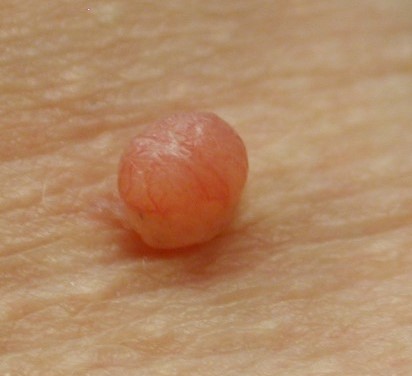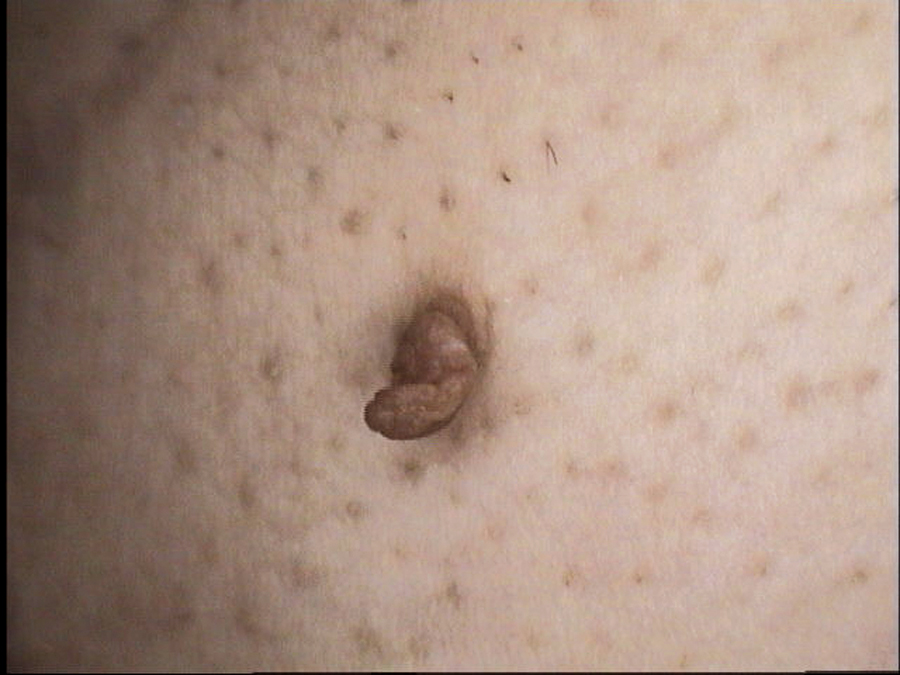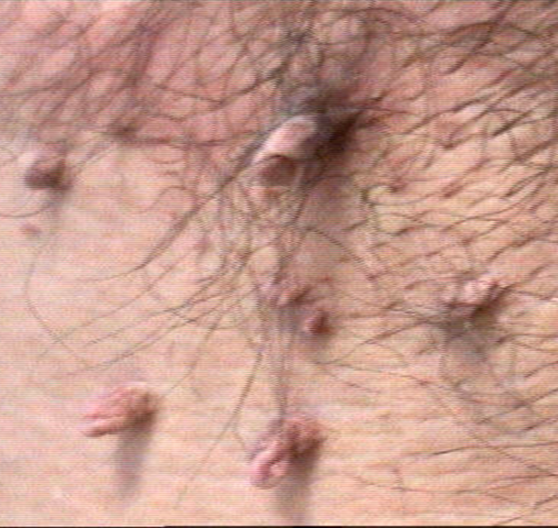Skin Tags
In your Practice:
The purpose of a through skin care consultation is multifold and essential to our job as skin care therapists. It allows us to assess the particular needs of an individual which in turn enables us to provide the best treatment options for our clients. It also provides a skin care therapist an opportunity to educate and inform each client about the multitude of Minor Skin Irregularities™ that may occur as a result of aging, environmental factors such as sun, hormonal factors or nutrition- inclusive of common irregularities such as skin tags.
Skin tags are common skin conditions that may affect men and women of all ages. While, not medically harmful, these are often a source of great anxiety for many of your clients who may deem them as “unsightly” and undesirable. Thus, it is our role as skin care therapists to assess, treat, and provide recommendations, in regards to skin tags to meet these client concerns and needs. Here, we shall look all these aspects so that as skin care providers we can provide thorough care to our clients.
What are Skin Tags?
Like many skin imperfections, skin tags are harmless and painless overgrowths of the skin. They are usually smooth, soft to the touch, and most often skin coloured. Skin tags form part of the fibroma family, classified as Acrochordon in medical terminology.
Usually small in size, some skin tags can be medium to sometimes quite large in size, as well. You can usually identify a skin tag easily, as they most often manifest as small fibromas that appear as a single tag or group together in a multi-tag formation. Some may have a stalk (peduncle) or they may completely be attached to the skin’s surface, although they often start as small, flattened bumps.
Skin tags can be distressing for your clients to discover, especially on varied places on their bodies. Due to their appearance, they are usually deemed as “undesirable”- especially if they appear on the face or the neck.
However unattractive they may be, as a skin care professional you can assure your clients that their skin tags are harmless and a painless condition. They are also non-cancerous, so if your clients are worried that their skin tags may be a sign of skin cancer, you can reassure them about their benign nature.
Where do Skin Tags Occur?
Skin tags can occur all over the body. They are most commonly seen on the eyelids, ears, neck, breasts, groin and underarms- areas that have folds or creases in the skin. They may occur as clusters or exist as a lone tag.
As skin tags are painless, they may go unnoticed unless they are in a prominent place, such as the eyelids, or in areas such as the neck where they can be exposed to chafing or are rubbed or scratched repeatedly due to chains or clothing constrictions. When they do occur around the eyes, or even on the eyelids, skin tags can grow large enough to cause impaired or blurry vision.
Oftentimes, skin tags are not obvious- they may be present in areas that are not visible, such as the underarms or groin. When they occur these areas like the under the breasts, groin, and underarms, skin tags are at risk of getting caught in zippers, hung in clothing, or otherwise painfully pinched or pulled. So, even in cases where the skin tags aren’t immediately visible to the naked eye, they may still be distressing to your client and prone to bleeding.
As many skin tags will not be visible during a standard skin care treatment, we can always take the initiative, go the extra mile, and ask our clients if they might have skin tags on other areas of their body which might be bothering them (ex. under the arms, etc).
What are the Contributing Causes of Skin Tags?
While the exact cause of skin tags is not known, we do know some factors are correlated with skin tags, such as age, since skin tags tend to appear with greater frequency from middle age onwards.
Skin tags can occur when clusters of collagen and blood vessels become trapped inside thick skin. It is also believed that skin chafing or constant rubbing may lead to skin tags, as they are most commonly seen in the creases of the skin. As a result, skin tags are often seen in overweight or obese middle-aged individuals.
Certain conditions, such as diabetes and hormonal imbalance are also seen to be concurrent with skin tags. Pregnant women often experience skin tags as well. This is believed to be due to hormonal fluctuations of the human chorionic gonadotropin (HCG) levels in the body. Some studies suggest a genetic link as well.
Though we’re not entirely sure how this occurs, some studies have also indicated that genetic factors can play a role in the development of skin tags and a client’s predisposition to them.
It’s also important to note that there is no cut-off age limit for developing skin tags or growing out of them, because even children can acquire a fibrous buildup of skin tags from constantly rubbing their eyes, friction due to sports, or weight increase. The occurrence of skin tags is seen in men and women of all skin types.
So, as always, while conducting their client examination skin care therapists should take note of their client’s age, weight and the presence of underlying conditions such as obesity and diabetes, with the knowledge that these factors can increase the likely the presence of skin tags.


Prevention Strategies for Skin Tags:
While skin tags are generally harmless, many people do find them bothersome and unsightly, especially if they have a tendency to develop multiple tags. Therefore, many of your clients may be very interested in learning preventative strategies to keep them from re-occurring in the future. When you get these questions, you can advise your clients of a few basic preventative measures that may be helpful in preventing or diminishing the appearance of skin tags.
One practice you can recommend to your clients, is that they remove their jewelry before bedtime as they might scratch and irritate the skin while tossing and turning in bed. They should take, as well, not to wear jewelry or accessories that touch any irritated area of the skin and , in general, avoid clothing or accessories that rub against the skin constantly.
A thorough removal of make-up should also be advised, taking care that the skin is cleansed between any folds of skin, as well. Any products, such as cheap eye make-up, that can lead to irritation and the temptation to rub the eye constantly, should be avoided, as well.
When the first smaller, flatter budding growths of skin tags start to occur, you can even recommend the use of mild exfoliation measures to diminish their appearance. Early steps toward prevention, such as regular mild exfoliation of the skin, can guard actually against skin tags, as well as help keep existing tags from becoming bigger, more inconvenient, or painful.
Remember to always advise your clients not to pick at skin tags or attempt to remove them on their own. Doing so can lead to painful infections and/or scarring, so it’s very important you’re your clients should be aware of this risk!
Traditional Treatments for Skin Tags
So, how can you help your clients in regards to treating these sometimes unsightly or bothersome skin growths?
Some minor skin tags are small enough they go unnoticed. Others may fall off on their own. Your clients may also have picked at their skin tags on their own, which can increase the risk of infection and scarring.
Clients with multiple skin tags often turn to skin care professionals, such as yourself, for assistance in dealing with them. Many traditional cauterizing tools that some skin professionals use, however, can be too powerful and invasive, resulting in a painful procedure with a risk of scarring.
Some devices, such as hyfrecators, actually burn the skin, resulting in a distinctive smell and smoke emanating from the procedure. Many doctors’ offices even use such blunt and basic tools as scissors to excise skin tags, with blood and scarring involved.
LAMPROBE Treatments for Skin Tags
LAMPROBE treatments, which utilize radio and high frequency, enable skin care professionals to treat single or multiple skin tags quickly and efficiently. These treatments require a single session only. While treating small to medium skin tags, clients will likely feel just a “pinching” sensation. They may experience a slightly stronger sensation while being treated for a considerably large skin tag.
Skin care practitioners use LAMPROBE to hygienically and safely remove the skin tags at their base – non-invasively -while maintaining the surrounding epidermal tissue. This leads to minimal surrounding tissue damage, with significantly low scarring compared to other traditional options.
LAMPROBE practitioners normally charge $25+ for the treatment of a single small skin tag, around $55 for a medium sized skin tag, and upwards of $75 for a large skin tag. Treatment time normally lasts for a few seconds, but this time span may be longer depending on the size of skin tag being treated.
There is no down time involved with LAMPROBE treatments and clients can return to work or go about their daily lives immediately after treatment. The rapid, Non-invasive procedure, with no blood and only minimal discomfort involved, is a significant benefit for clients over traditional at home or invasive procedures such as surgery.
Clients are amazed and impressed by the instant results of the LAMPROBE!
Final Thoughts:
Skin tags are a common concern for your clients. And with the focus of mass attention shifting towards healthy, unblemished and unmarred skin, skin care professionals must be ready to educate and advise clients on their treatment!
The LAMPROBE will enable you, as a professional skin care therapist, to meet this growing consumer demand for skin tag treatment safely and effectively. With instant results and no down time, the LAMPROBE will treat your client’s skin tags safely and effectively on any part of the body.
There is a great degree of professional pride and satisfaction in being able to service the unmet needs of your clients, surpass their expectations, and have them leave your place of business happy and satisfied with healthy, radiant skin.
Staying informed and being on the lookout for minor issues that clients might not disclose readily is a great way to deliver unparalleled and personalized customer service. Keeping an eye out for them is a great way to go the extra mile for your clients.
© Lamskin

Posted in Uncategorized













